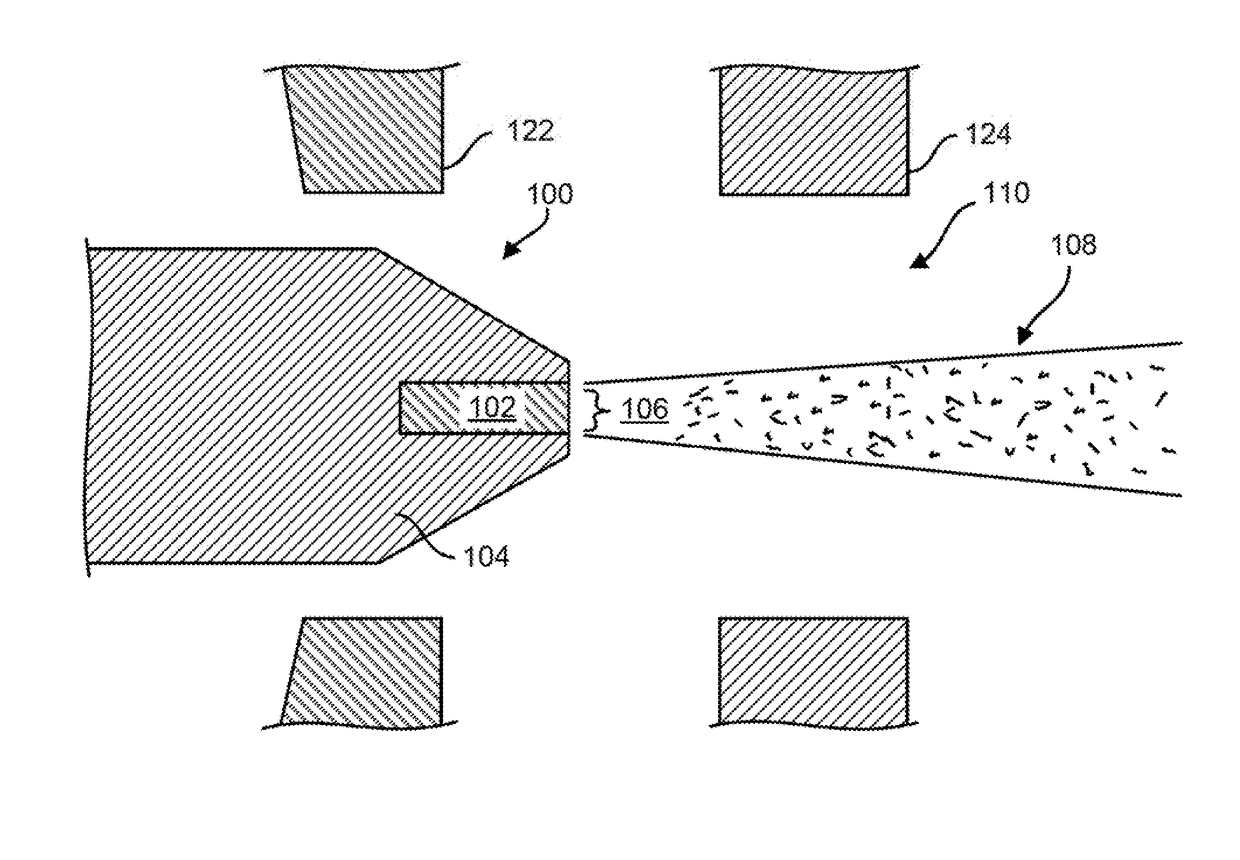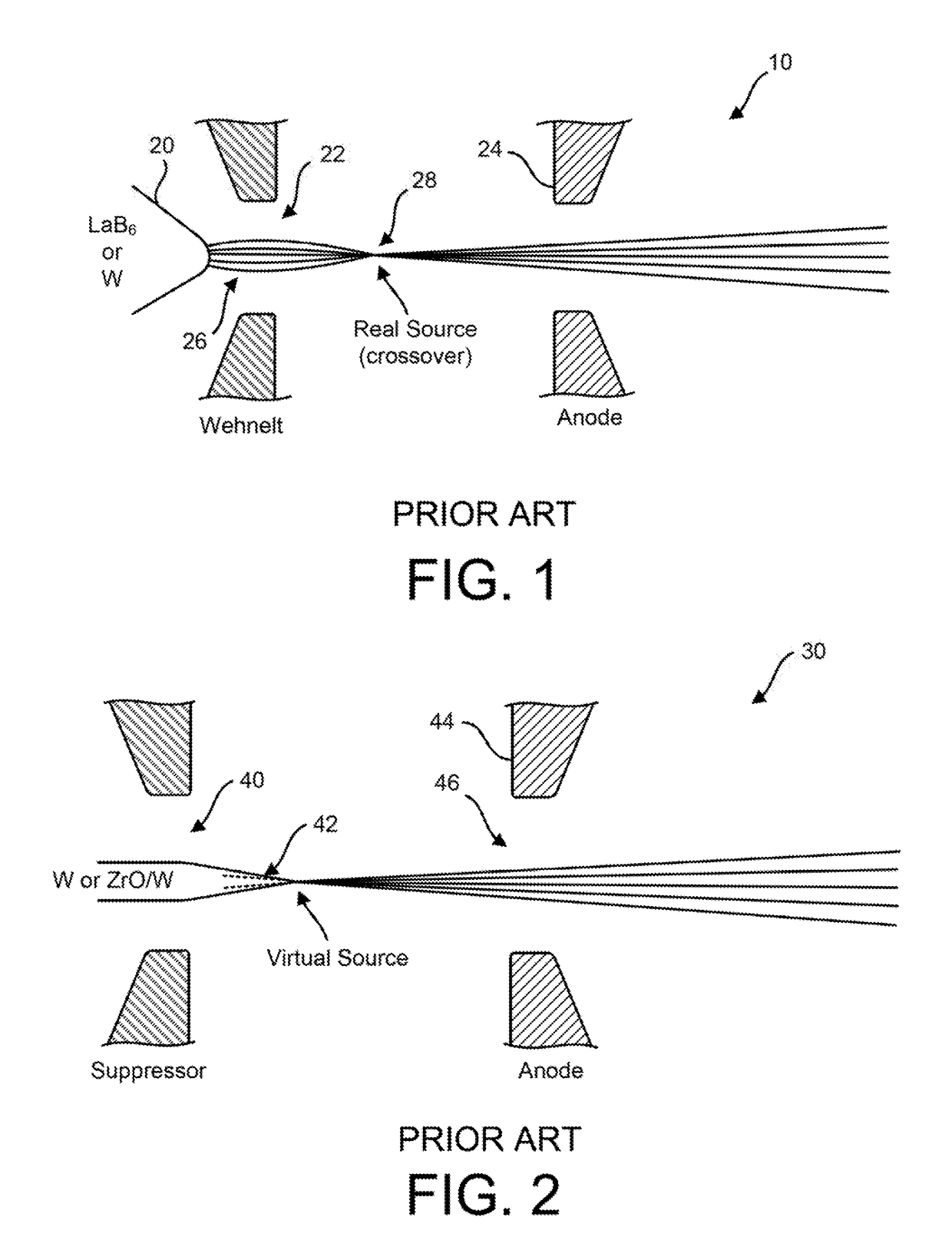Electron emitter source
a technology of emitter and emitter body, which is applied in the direction of discharge tube/lamp details, x-ray tubes, electrostatic control tubes, etc., can solve the problems of reducing the performance of the emitter, angular intensity, and negative impact on the key properties of the emitter
- Summary
- Abstract
- Description
- Claims
- Application Information
AI Technical Summary
Benefits of technology
Problems solved by technology
Method used
Image
Examples
embodiment 100
[0032]FIG. 4 shows an alternate embodiment of the emitter 200 where like features have the same numbering as in the original inventive embodiment 100. The emitter 102 is formed of a 20-100 micron diameter cylinder of low work function material, and having a length greater than 50 microns. Suitable low work function material includes Lanthanum hexaboride or Iridium Cerium. This cylinder 102 is embedded in a high work function material that could be a cylinder 104 with diameter between 100-1000 microns that has a machined cone 112 on the end. One suitable material for the high work function material is high purity graphite. The cone has a 50-400 micron diameter flat 114 at the end that has a hole 116 drilled near the center where the low work function cylinder 102 is inserted. The cone half angle A is preferably between 5 to 85 degrees and more preferably between 20 and 70 degrees. The hole is drilled in the high work function material such that the low work function cylinder has a ti...
embodiment 500
[0038]FIG. 7 shows an alternate embodiment 500 of the emitter, which includes drilling one or more vent holes 532 from edge of the embedded emitter 102 to the edge of the graphite cylinder 104. The vent hole improves the vacuum near the emitter by providing an exit path for trapped gases or gas byproducts of reactions that occur at elevated temperatures. A useful vent hole is preferably between about 50-100 microns in diameter.
[0039]FIG. 8 shows yet another alternate embodiment 600 where like features have the same numbering as in the original inventive embodiment 100. The emitter 102 is formed of a 20-100 micron diameter cylinder of low work function material, and having a length greater than 50 microns. This cylinder 102 is embedded in a high work function material that could be a cylinder 604 with diameter between 100-1000 microns terminating in a cylinder end 614 on the end. One suitable material for the high work function material is high purity graphite. As with the embodiment...
PUM
 Login to View More
Login to View More Abstract
Description
Claims
Application Information
 Login to View More
Login to View More - R&D
- Intellectual Property
- Life Sciences
- Materials
- Tech Scout
- Unparalleled Data Quality
- Higher Quality Content
- 60% Fewer Hallucinations
Browse by: Latest US Patents, China's latest patents, Technical Efficacy Thesaurus, Application Domain, Technology Topic, Popular Technical Reports.
© 2025 PatSnap. All rights reserved.Legal|Privacy policy|Modern Slavery Act Transparency Statement|Sitemap|About US| Contact US: help@patsnap.com



